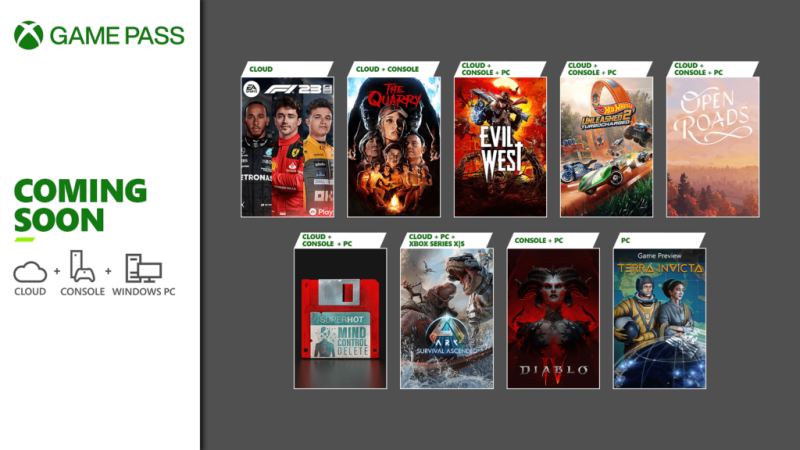Over the past few years, diffusion models have achieved massive success and recognition for image and video generation tasks. Video diffusion models, in particular, have been gaining significant attention due to their ability to produce videos with high coherence as well as fidelity. These models generate…
Joscha Koepke, Head of Product at Connectly – Interview Series
Joscha Koepke, is the Head of Product at Connectly, a code-free platform that lets you create campaigns and interactive bots to easily automate two-way conversations – to both leads and loyal customers – at scale. Connectly has a vision is to create the AI-powered infrastructure of…
7 cyber assets expanding your attack surface and how to find them

EXECUTIVE SUMMARY:
You’ve invested in cyber prevention and defense tools; next-gen firewalls, endpoint detection and response, SIEM, and more. However, despite this, breaches continue to occur. Perhaps your organization has contended with more breaches than it would care to admit.
And at this point, maybe you’re ready to just about toss in the towel. But before you’re bought out by burnout, consider the following:
One reason for consistent breaches pertains to obscure cyber assets. Yes, your enterprise might have a trove of cyber assets that are unknown to your team, flying under the radar and secretly expanding your attack surface.
These marauding and elusive assets create unseen vulnerabilities that cyber attackers are eager to exploit. From rogue cloud instances to server misconfigurations, any untracked cyber resource or failure represents a potential entry point into your networks.
In this article, discover seven frequently overlooked cyber assets that could accidentally increase your cyber risk exposure. We also provide guidance on how to identify these hidden threats within your environment. Keep reading to learn more.
1. Orphaned cloud resources. As cloud adoption accelerates, it becomes easier for cloud resources like storage buckets, databases, and compute instances to go untracked and unprotected. Orphaned from active monitoring, these ghost assets provide attackers with a backdoor into your cloud environment.
2. Rogue internet-exposed assets. From authenticated web apps to database servers, any internet-exposed asset represents risk if not properly secured. Rogue assets that slip through the cracks give hackers a direct path into your internal networks.
3. Forgotten personal/BYOD devices. With hybrid workforces now the norm, personal and BYOD devices have multiplied. Many go unaccounted for and lack security controls. They serve as unmonitored entry points to corporate data.
4. Sprawling internet of things (IoT). The attempted business optimization efforts, as through IoT, have flooded networks with countless smart devices. However, IoT security is frequently an afterthought, leaving deployments of smart cameras, sensors, HVAC controllers and more as low-hanging fruit for hackers.
5. Misconfigured network infrastructure. Oversights like open ports, unsecured protocols, and improper access controls on routers, switches and other network equipment can enable lateral movement within your infrastructure.
6. Outdated software/hardware. From OS vulnerabilities to end-of-life appliances, outdated and unpatched systems inevitably creep into complex environments, creating exploitable weaknesses.
7. Acquired company/asset blind spots. Mergers and acquisitions often introduce inherited risks in the form of untracked assets, technical debt, and risky integrations from the acquired entity.
Attack surface monitoring
How can you identify and mitigate the risks that derive from these unknown, but extant, cyber resources? The answer is continuous attack surface monitoring.
Advanced attack surface management solutions provide real-time discovery of all cyber assets across on-prem, cloud, home, and IoT environments. With a high level of visibility, as presented through a unified platform, you can accurately assess security posture and prioritize previously unknown risks.
Leaving any asset untracked is akin to leaving your doorway wide open to attackers. Illuminate your entire attack surface, and eliminate your hidden cyber risks. Learn more about top-tier attack surface monitoring and management tools, here.
Lastly, subscribe to the CyberTalk.org newsletter for timely insights, cutting-edge analyses and more, delivered straight to your inbox each week.
Satellite Laser Links From SpaceX To Be Available Commercially – Technology Org
SpaceX has announced its near-future intention to commercialize proprietary satellite laser links. This plan was revealed by company…
Navigating the Future of Tech: The Strategic Advantages of Software Development Outsourcing – Technology Org
These days, businesses of all sizes are continuously facing the pressure of the necessity to innovate and evolve…
LEGO Reveals Massive Dungeons & Dragons Set

Today, after months of rumors and speculation, LEGO (in partnership with Wizards of the Coast) revealed the first full look at the new Dungeons & Dragons-themed building set entitled Red Dragon’s Tale. The large 3,745-piece set is set to release on April 1 in LEGO stores and to those in the LEGO Insiders program. Everyone else can roll for initiative on snagging a set on April 4, for the price of $359.99.
Produced through the popular LEGO Ideas platform, where fans are able to submit their own build concepts that are then refined and produced as official sets, the final set includes a full dungeon and tower, a tavern, and six minifigures (including an Orc Rogue, Gnome Fighter, Elf Wizard, and Dwarf Cleric). Builders also get several iconic D&D monsters, including an owlbear, beholder, displacer beast, and, of course, the red dragon Cinderhowl, who acts as the centerpiece of the set.
Interestingly, LEGO is offering an actual D&D adventure book to LEGO Insiders as a free digital download or as a paperback book that can be purchased with 2,7000 Insider points. That same book will show up on D&D Beyond (Wizards of the Coast’s digital hub for D&D) complete with characters sheets and digital dice. Presumably, the idea is that you could play out the adventure with the included LEGO minifigs and monsters as the miniatures used on the table, which is a pretty slick way for dedicated players to capitalize on the completed build.
In addition to the larger set, LEGO also revealed plans for a full line of D&D-themed minifigures, launching in September 2024.
Will you be checking out this crossover set? Let us know in the comments!
March’s Xbox Game Pass Line-Up Has Diablo IV and Cars Galore
Microsoft’s highly publicized acquisition of Blizzard has had wide-reaching effects, and while some of them have been quite awful, this month showcases one of the upsides. Diablo IV, one of Blizzard’s big 2023 releases, comes to Xbox Game Pass late next week, on March 28. We enjoyed the game quite a bit at launch, calling it a “massive and deeply engrossing action RPG,” so if you’ve been waiting to check it out, now is a good time to do so.
This month also includes a trio of games built around cars, though the three are each very different. F1 23 simulates the realism and intensity of Formula 1 racing, Hot Wheels Unleashed 2 is an arcade racer full of child-like wonder, and Open Roads (which will launch on Game Pass) is a quieter, narrative-driven game about a mother and her daughter going on a road trip. Maybe they’ll help me on my journey of learning how to drive.
Here’s the rest of the line-up:

What’s Coming To Game Pass This Month
Lightyear Frontier (Game Preview) (Cloud, PC, and Xbox Series X|S) – Today
MLB The Show 24 (Cloud and Console) – Today
The Quarry (Cloud and Console) – March 20 | Our Review
Evil West (Cloud, Console, and PC) – March 21
Terra Invicta (Game Preview) (PC) – March 26
Diablo IV (Console and PC) – March 28 | Our Review
Hot Wheels Unleashed 2 – Turbocharged (Cloud, Console, and PC) – March 28 | Our Review
Open Roads (Cloud, Console, and PC) – March 28
Ark: Survival Ascended (Cloud, PC, Xbox Series X|S) – April 1
F1 23 (Cloud) EA Play – April 2
Superhot: Mind Control Delete (Cloud, Console, and PC) – April 2 | Our Review
What’s Leaving Game Pass On March 31
Hot Wheels Unleashed (Cloud, Console, and PC) | Our Review
Infinite Guitars (Cloud, Console, and PC)
MLB The Show 23 (Cloud and Console) | Our Review
PTZOptics Move SE: Affordable, Easy to Use and Great Performance! – Videoguys

In this article written by Nicole LaJeunesse for Videomaker, explore the dynamic capabilities of the PTZOptics Move SE, a compact PTZ camera perfect for small-scale livestreaming productions and individual content creators. Discover its advanced features, versatile connectivity options, and user-friendly controls in this detailed review.
In the fast-paced world of livestreaming, having the right equipment can make all the difference. Enter the PTZOptics Move SE – a compact powerhouse designed to elevate your livestreaming game. In this comprehensive review, we delve into the features, connectivity options, and performance of the Move SE, uncovering why it’s a must-have for solo creators and small production teams alike.
Exploring Advanced Features
At the heart of the PTZOptics Move SE lies its advanced features, including auto-tracking and optical zoom capabilities. With options for 12x, 20x, or 30x optical zoom, this camera delivers crisp, detailed shots from any distance. Whether you’re capturing dynamic presentations or live events, the Move SE ensures your content stands out with professional-grade quality.
Seamless Connectivity Options
Connectivity is key in the world of livestreaming, and the Move SE doesn’t disappoint. From HDMI and 3G-SDI to video over IP and power over ethernet, this camera offers a myriad of options to suit your production needs. Plus, with the ability to upgrade to NDI|HX support, managing video sources over a network has never been easier, streamlining your workflow and enhancing efficiency.
User-Friendly Controls
Controlling the Move SE is a breeze, thanks to its diverse control options and intuitive interface. Whether you’re using common livestreaming software or PTZOptics’ own free software and plugins, you’ll have all the tools you need to adjust camera settings with ease. And with the included IR remote control, solo producers can make adjustments on the fly, ensuring a seamless livestreaming experience.
Versatile Mounting Options
Despite its compact size, the PTZOptics Move SE offers versatile mounting options, making it suitable for a variety of environments. Whether you’re mounting it on a wall, ceiling, or pole, its discreet design and automatic adjustment of the video feed ensure a seamless setup every time. Plus, with its sturdy construction and built-in Kensington lock, you can rest assured knowing your camera is secure, even in communal spaces.
In conclusion, the PTZOptics Move SE is a game-changer for livestreamers and content creators alike. With its advanced features, seamless connectivity options, user-friendly controls, and versatile mounting options, it’s the perfect companion for elevating your livestreaming productions. Whether you’re a solo creator or part of a small team, the Move SE has everything you need to unlock your livestreaming potential and stand out from the crowd.
Read the full article by Nicole LaJeunesse for Videomaker HERE
Why Choose Elixir For Your Next Software Development Project? – Technology Org
Choosing the right programming language for your project is probably one of the most difficult choices to make….

